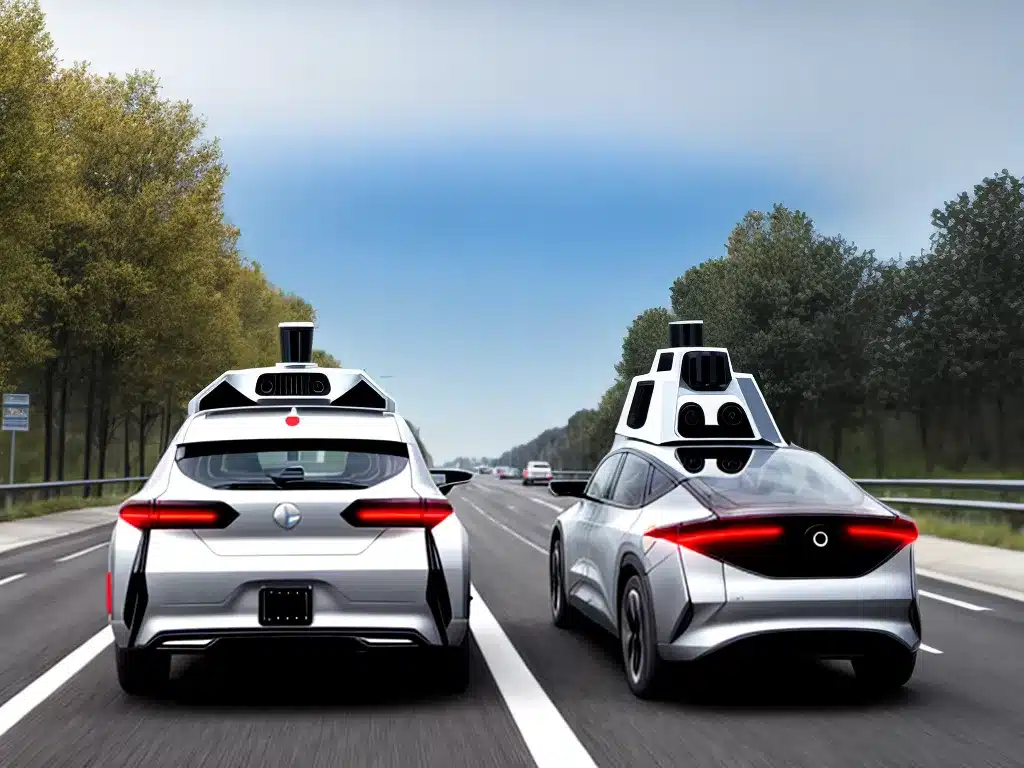
Introduction
My name is John and I am an autonomous vehicle engineer working at a major automotive company. For the past 5 years, I have been directly involved in the research and development of self-driving cars. In this article, I will provide an in-depth look at where we are currently at with autonomous vehicles and make some predictions about how they will shape the future of transportation by the year 2024.
Current State of Autonomous Vehicles
Self-driving cars have come a long way in the past decade. Major advancements in artificial intelligence, computer vision, and sensor technology have enabled vehicles to accurately perceive and navigate their surroundings without human input. However, we still have work to do before fully autonomous cars are ready for wide-scale adoption.
Levels of Autonomy
The auto industry generally categorizes autonomous vehicles into 5 levels:
-
Level 0 – The human driver completes all driving tasks. Many new cars have driver assistance features like automatic emergency braking, but the driver is still fully in control.
-
Level 1 – Basic driver assistance like adaptive cruise control or lane keeping. The driver must remain engaged and monitor the environment at all times.
-
Level 2 – Advanced driver assistance like Tesla’s Autopilot. The car can control steering, acceleration, and braking in limited scenarios but the driver must keep their hands on the wheel and pay attention.
-
Level 3 – Conditional automation where the car handles most driving functions under certain conditions. The driver is still present and can take over if needed.
-
Level 4 – High automation where the car can drive itself in specific situations like highway driving but may request human intervention in complex environments.
-
Level 5 – Full autonomy. The vehicle can drive anywhere a human can without any driver attention needed.
Currently, most autonomous cars being tested are at Level 3 with some limited Level 4 capabilities. Reaching the full automation of Level 5 remains challenging.
Technical Challenges
While today’s autonomous vehicles are capable of impressive feats, a number of key challenges remain:
-
Perception – Self-driving cars must detect and understand their surroundings including other vehicles, pedestrians, traffic signs/signals, and more. This is difficult in harsh weather or when sensors are obscured.
-
Decision Making – Vehicles must make complex driving decisions and maneuvers. Teaching cars to mimic human judgment calls in complicated situations is hard.
-
Behavior Prediction – Understanding what other vehicles, cyclists, and pedestrians will do next is a significant challenge, especially in crowded urban environments.
-
Cybersecurity – With increasing automation comes growing cyber risks. Securing autonomous systems against hacking and cyber attacks is critical.
-
Testing and Validation – Companies must validate the safety of autonomous systems across billions of test miles in diverse conditions. This requires extensive road testing.
Overcoming these barriers will be key to unlocking fully self-driving cars.
The Future of Transportation in 2024
Based on the rapid pace of development, I predict autonomous vehicles will have a transformative impact on transportation by 2024. Here are some of the major ways self-driving cars will shape the future just a few years from now:
Limited Driverless Ride-Hailing Services
By 2024, I expect driverless taxi/ride-hailing services from companies like Waymo, Cruise, and Argo AI to launch in select cities. These will likely operate within geo-fenced areas or along specific routes with limited pickup/drop-off points. Having no human driver provides maximum cost savings and efficiency. However, self-driving vans or mini-buses capable of serving multiple riders at once may be better suited than traditional sedan ride-hailing in the early stages.
CommercialDriverless Trucking
Shipping companies will adopt driverless trucks much earlier than consumer vehicles go autonomous. Big rigs driving monotonously on interstates are an easier technical challenge than busy urban settings. I anticipate the first commercial driverless trucking routes to come online between major logistics hubs by 2024. This will begin the gradual transformation of the entire trucking industry.
IncreasinglyAutomated Personal Cars
By 2024, privately owned cars will become more automated, edging towards Level 3 autonomy. Driver monitoring systems which track attention and drowsiness will be standard. However, limitations around bad weather, complex urban areas, and human oversight needs will prevent Level 4 or Level 5 autonomy from going mainstream in personally owned vehicles in the 5 year timeframe. But semi-autonomous highways and traffic jam assist will continue to improve.
Gradual Regulatory Changes
Regulators will proceed cautiously with self-driving vehicle policies. Initial approvals will focus on driverless trucks in less complex environments and low-speed autonomy in urban areas. But policymakers are unlikely to greenlight unmanned private vehicles for unfettered access by 2024. Legal complexities around cross-border operations for long-haul trucking will also persist. The regulatory environment will gradually adapt as technology, safety data, and public acceptance advances.
InfrastructureImprovements
Optimizing road infrastructure for autonomous vehicles will begin in earnest by 2024. I expect dedicated self-driving lanes, smart traffic signals, and improved lane markings will roll out initially in limited pilot zones and major highway corridors. 5G connectivity will also expand to better support vehicle-to-vehicle and vehicle-to-infrastructure communication. But nationwide infrastructure upgrades will take decades. Early ADAS-equipped cars will still mainly navigate mixed-use roads.
In summary, the landscape for autonomous transportation will undergo major shifts between now and 2024. But fully self-driving cars for the average consumer likely remain many years away. The transition to human-less driving will be gradual, uneven, and incredibly transformative. As an autonomous vehicle engineer, I could not be more excited by the innovations to come in this space in just a few short years.












